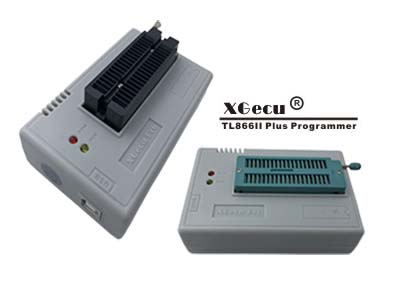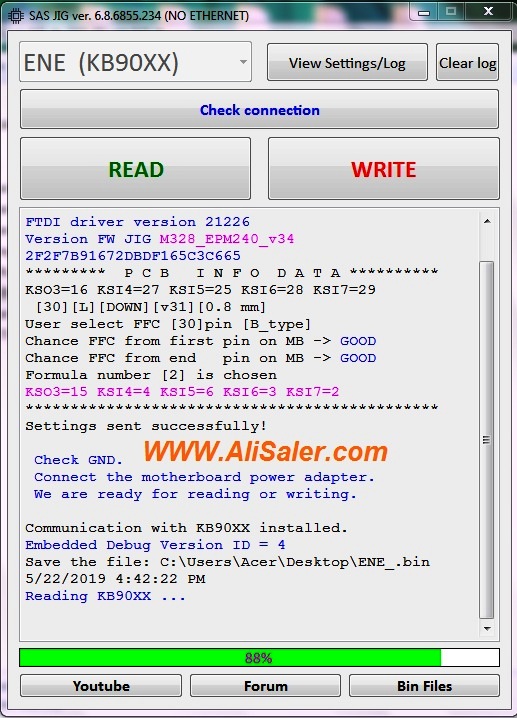

Set up DMA channel 2 (as in the DMA article) - by setting the total transfer bytecount - 1, the target buffer physical address, The only other way of doing data transfers is called "PIO Mode" (see below). The floppy typically uses ISA DMA (which is not the same thing as PCI BusMastering DMA) to do data transfers. You would then send this data to the floppy controller. Void lba_2_chs ( uint32_t lba, uint16_t * cyl, uint16_t * head, uint16_t * sector ) This can be described in C with the following code: LBA = ( ( CYL * HPC + HEAD ) * SPT ) + SECT - 1 It is, however, much more logical to address things in LBA (Logical Block Addressing), as the first sector is at 0 (like an array).Ĭonversion between the two is rather simple.
#Data io chip writer driver
Is always highly illegal and this is a major source of errors in prototype driver code. Numbers are typically 0 to 79 inclusive, heads are 0 or 1, and sector numbers are 1 to 18 inclusive. The cylinders and heads are counted starting with a 0 base, but the sector numbers start counting from 1. Typically, as said above, it is 80 cylinders and 18 sectors per track. There are always 2 heads (sides), but the driver (and controller) must also know how many cylinders and You only need to seek one head to find a particular cylinder, so that both heads may read/write that cylinder.įloppy drives use CHS addressing exclusively.
#Data io chip writer code
(There is a misconception about this in many floppy driver code examples.) Opposite the track on the other side of the disk. The "track" on one side of a disk is always exactly With two "heads" that are bolted together. The onlyĪctual hardware you will typically run into now is 3.5 inch, 1.44MB drives.Ī 1.44MB floppy disk is usually formatted with 80 cylinders, 2 sides, and 18 sectors per track.

There also used to be 3.5 inch low density media. There used to be mediaįor each of these drive types.

In the olden days, there used to be 5.25 inch low-density, high-density, and single-sided drives.

It is probably wisest to always get the drive count and types from CMOS, register 0x10. The third floppy controller can be found at a base IO port address of 0x360. Most of these will have originally been diskĭuplication systems. Some systems also have a third floppy controller, but these are exceedingly rare. If a system has more than one floppy controller, the second controller will be found at a base IO port address of 0x370. It is possible for a system to have more than one controller chip, but you will not find many existing systems with One floppy controller chip can control 2 floppy cables, for a total Subsystem is the primary remaining one that accesses the obsolete and terrible ISA DMA system for its data transfers.Įach ribbon cable for floppy drives can support 2 drives. There were never definitiveįlags added to identify which "mode" the controller is operating in. Same information in two different locations - and if the duplicated info doesn't match, the command fails. Of the bit definitions were actually reversed in meaning, not merely made obsolete. The floppy subsystem is probably the worst. Many of the devices that an OS controls in an x86 system have had functional patches added to them over the years. USB floppy drives do not use any of the IO ports or FDC commands described in this article. It may turn off your floppy motors for you, once.Īll USB devices, including USB floppy drives, are accessed indirectly (using SCSI-style commands encoded in USB datapackets) over the USB bus. So, in the distant future, if the BIOS ever receives 36 more IRQ0 ticks (if you ever return to Real Mode) The last access may have beenĪttempting to load your bootloader. Note2: the BIOS IRQ0 handler remembers a timeout for turning the motor off, from the last BIOS floppy access. Note: the Extended BIOS Int13h functions do not work with floppies.
#Data io chip writer drivers
The rest of this article deals with creating Protected Mode drivers for the floppy subsystem. More detailed info can be found in the ATA in x86 RealMode (BIOS) article, because accessing a floppy is identical to accessing a hard disk You need to know the "drive number" (typically 0 or 1), and put that value in DL. INT13h AH=2 (read) or AH=3 (write) to access floppy drives. (So pay close attention to that datasheet, below.)įor bootloaders or OSes that run with the CPU remaining in Real Mode, use BIOS Function For more recent systems, a model of that chip has been embedded in the motherboard chipset. The 82077AA is the mostĪdvanced, and has been produced since 1991. There are a range of chips that have been produced for this function which include: 8272A, 82078, 82077SL & 82077AA. The Floppy Disk Controller (FDC) is a (legacy) device that controls internal 3.5/5.25 inch floppy disk drive devices on desktop x86 systems.


 0 kommentar(er)
0 kommentar(er)
